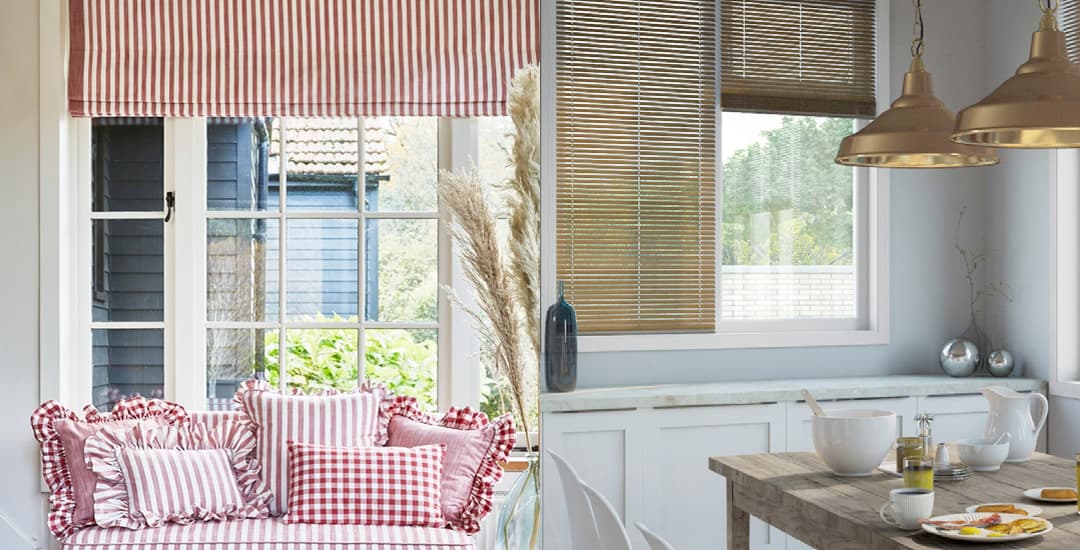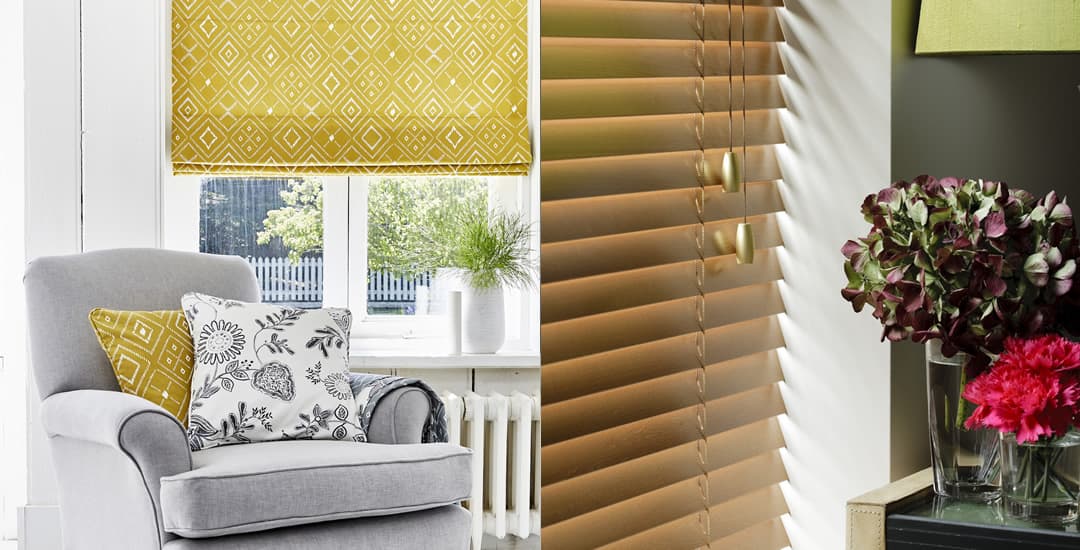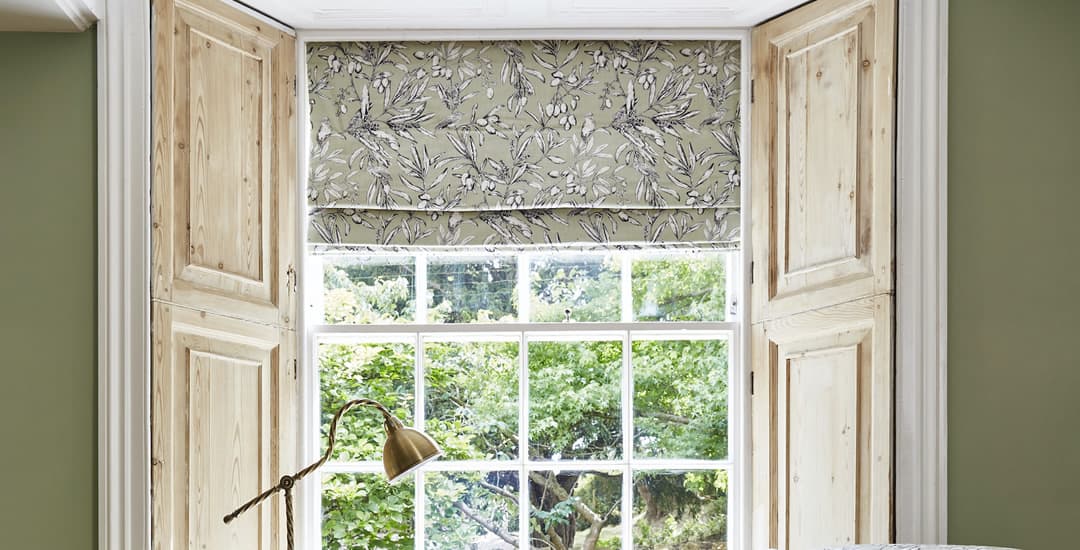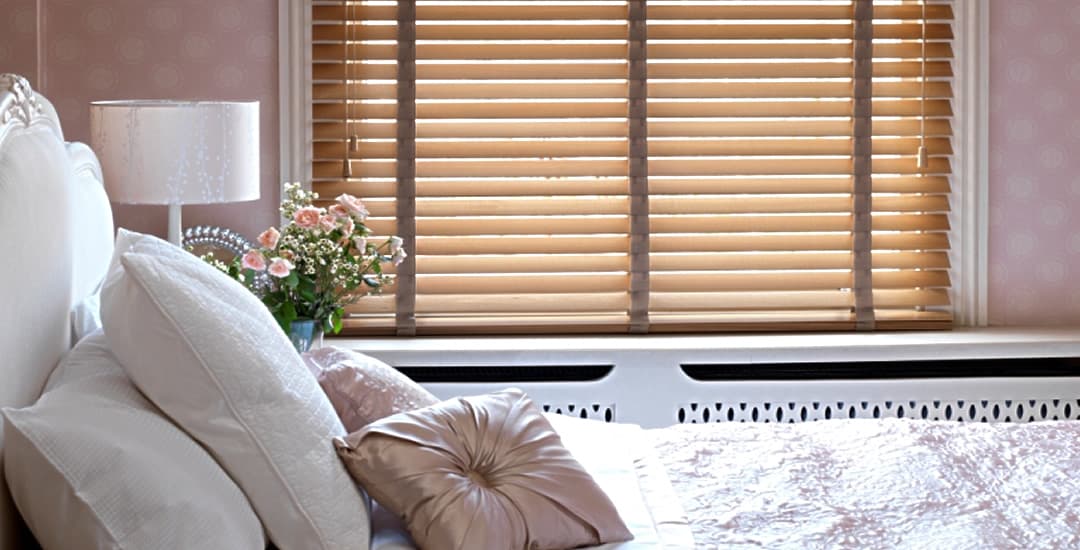
In terms of appearance, Roman blinds and Venetian blinds look virtually nothing alike. Roman blinds are made of one solid sheet of fabric that folds up in pleats; Venetian blinds are constructed of narrow horizontal slats. Roman blind fabrics are often very elaborate and decorative, whilst Venetian blinds are minimalistic, and made of totally different materials.
Generally, when we say “Venetian blinds” we’re referring to enamel painted aluminium ones, but wooden blinds and faux-wood blinds are types of Venetian blinds too.
Plus, how they work and what they’re good for is quite different for Roman blinds versus Venetian blinds as well!
What is the difference between Roman blinds and Venetian blinds looks-wise?
Pretty much everything! Roman blinds are fabric, and Venetian blinds are painted aluminium. You might also hear wooden blinds and faux-wood blinds referred to as Venetian blinds too, as they are indeed variants on the theme.
These pictures should show you immediately what makes Roman blinds very different to Venetian blinds:

What is the difference between Roman blinds and Venetian blinds in terms of appearance?
- Roman blinds are made of fabrics, often quite costly or high-end ones, potentially finished in a pattern or elaborate design. Venetian blinds are made of hard materials; most commonly enamel-painted aluminium in any colour, but also potentially real wood or faux-wood in various wood or wood-effect finishes and/or painted finishes.
- Roman blinds when open or partially open form pleats of fabric; Venetian blinds when open or partially open form a stack of slats, which can be rotated and tilted when closed or partially closed.
- Roman blinds are widely considered to be the most high-end of blinds; they’re prestigious, made from luxurious fabrics, and usually, handmade or hand finished. Whilst wood and faux-wood Venetian blinds can be quite distinctive and expensive-looking, they’re far more minimalistic. Regular aluminium Venetian blinds can be said to be minimalistic looking too, and also, very modern.
What is the difference between Roman blinds and Venetian blinds functionally?

- Roman blinds make for excellent insulators and blackout blinds, but they can’t be used to precisely filter the light, and nor are they suitable for use in wet environments or rooms subject to a lot of humidity, like the kitchen or bathroom.
- Venetian blinds can be used to filter light by means of tilting their slats. Faux-wood Venetian blinds are waterproof and so, can be used in kitchens and bathrooms; real wood Venetian blinds cannot, and aluminium Venetian blinds can be used in moderately humid environments, but not in rooms that get very wet.
- Faux-wood and real wood blinds are both good insulators, albeit neither have quite the impact of a thermally insulating Roman blind. Aluminium Venetian blinds aren’t great at insulating a window at all.
What is the difference between Roman blinds and Venetian blinds in terms of pricing? Are Roman blinds more expensive than Venetian blinds?

The cost of any given blind depends on things like the size of the window and the quality of the blind, but all things being equal, are Roman blinds more expensive than Venetian blinds? Yes.
Roman blinds are high-end blinds designed to make a window into a statement and to finish off an elegant, opulent, or grand room, and the materials they’re made from and the workmanship involved in creating them means that they’re generally the most costly type of blinds to buy overall.
Venetian blinds made of aluminium are at the other end of the price scale; they’re among the least expensive type of blinds to buy. Faux-wood Venetian blinds fall around the middle of the scale, with real wood Venetian blinds sitting a little higher up.
You can compare the price of a Venetian blind to a Roman blind like-for-like for any given window by inputting your measurements on one of our product pages to get an instant quote, and then order directly if you wish.




